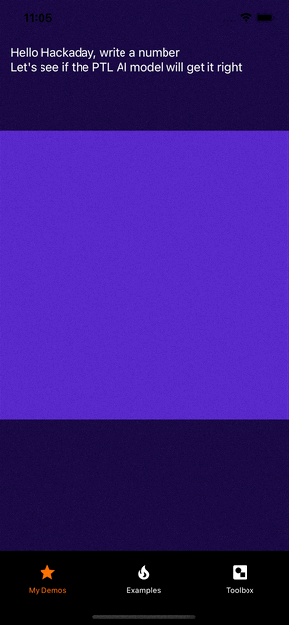"with Power With AI in the palm of your hand, your business will be Invincible.,
It seems that marketing artificial intelligence is read for companies. It seems like everyone has access to cloud-scale AI-powered business intelligence. While it sounds impressive, we're not convinced that Mumbo Jumbo's marketing makes sense. But what does an AI on Edge device look like these days?
Being on the edge means that the actual AI evaluation and even fine-tuning run locally on the user's device rather than in some cloud environment. This is a double win for both the business and the user. Privacy can be more easily protected because less information is transmitted back to a central location. Additionally, AI can operate in scenarios where a server may be inaccessible somewhere or provide a response quickly enough.
Google and Apple each have their own AI libraries, ML Kit and Core ML, respectively. There tools are To convert Tensorflow, PyTorch, XGBoost, and LibSVM models into formats that CoreML and ML Kit understand. But other solutions try to provide a platform-agnostic layer for training and evaluation. We have covered Tensorflow Lite (TFL) beforeA mini-version of Tensorflow, which has matured since 2017.

For this article, we will see PyTorch Live (PTL), a slim framework for adding PyTorch models to smartphones. Unlike TfL (which can run in an RPi and a browser), PTL focuses entirely on Android and iOS and offers tighter integration. It uses a react-native supported environment which means it is heavily geared node.js world,
no cloud required
Right now, PTL is very early. It runs on macOS (though there's no Apple Silicon support), but Windows and Linux compatibility is apparently forthcoming. It comes with a handy CLI that makes starting a new project relatively painless. After setting up and creating a new project, the experience is smooth, with a few commands taking care of everything. The tutorial was straightforward, and soon we had a demo that could recognize numbers.
 It was time to take the tutorial further and create a custom model. using the EMNIST datasetWe trained a . Make Resnet9 Model with alphabets dataset using help from A Useful GitHub Repo, Once we had a model, the PyTorch utilities were easy enough to use Export the model to Lite environment, With a few changes to the code (which reloads live on the simulator), it recognizes characters instead of numbers.
It was time to take the tutorial further and create a custom model. using the EMNIST datasetWe trained a . Make Resnet9 Model with alphabets dataset using help from A Useful GitHub Repo, Once we had a model, the PyTorch utilities were easy enough to use Export the model to Lite environment, With a few changes to the code (which reloads live on the simulator), it recognizes characters instead of numbers.
We doubt that someone a little more immersed in the world of machine learning will be able to take much further than us. PTL has other exciting demos, such as on-device speech recognition And live video split and recognition. Overall the experience was smooth, and relatively easy to implement in the scenarios we were attempting.
If you're already into the react-native world of smartphones, PTL seems easy to integrate and use. Outside of that, much remains unsupported. Tensorflow Lite was similarly constrained when we first covered it and it has since matured and gained new platforms and features, becoming a powerful library with many supported platforms. Finally, we'll see how PyTorch Live evolves. There is already support for GPU and Neural Engine in the beta branch.

0 Comments